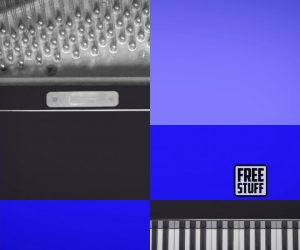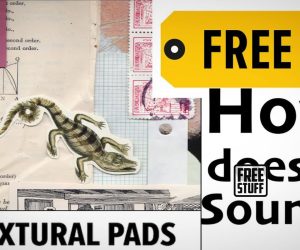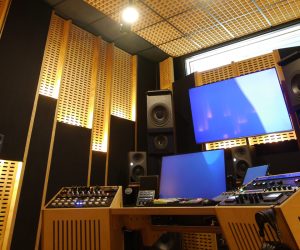
Soundtrack for The Sentinel
Mention the words ‘temp score’ to any film composer and they’ll roll their eyes and shift uneasily in their chair. Chris Beck’s score for The Sentinel is a good example where originality reigns.
Text: Gomez
In an impossibly short time span, composer Chris Beck has scored a fistful of films in virtually every genre imaginable. His talent is evident in a wide range of features; anything from the classic teen comedy Bring It On to the best-selling novel film adaptation Under The Tuscan Sun, with Cheaper by the Dozen, Pink Panther, American Wedding and loads of others in between. Not sure if it’s the sort of accolade one courts or not… but entertainment mouthpiece, Hollywood Reporter, billed Beck as its ‘Busiest Composer’ of 2005.
I spoke to Chris from his studio, about his latest project The Sentinel. If you haven’t seen the movie yet, then the words ‘with all due respect Mr President’, ‘Listen up people’, and ‘holster your weapon special agent Breckinridge!’ should put you in the picture. The success or otherwise of The Sentinel as a high-class thriller may be one thing, but the score is something else. It features the traditional brooding French horns and Hollywood soaring strings, but more fascinatingly it’s melded with burbling and squelching analogue synth work. It’s a novel combo and one that works well.
Gomez: Congratulations on The Sentinel soundtrack, Chris. You used a lot of electronic textures in this one. Tell me about how you found those sounds.
Chris Beck: First of all, I really enjoy collaborating with talented sound designers – people who can create snippets of sonic material for me that I can incorporate into scores – and I like using different people on different projects. A couple of years ago, I was poking around one of the mailing lists on the internet to do with analogue synths and this guy by the name of Michael White from Toronto posted a little improvisation he did using his modular synth. It was so cool and so filmic and so unique that I was immediately taken with it, and I kinda filed it away for future reference under “I’ve got to call this guy some day when I have a film I can use this particular sound on”. Sure enough, The Sentinel came along, and the filmmakers kept on talking about how important technology was in the movie, using a lot of cars, a lot of guns, a lot of people on radios, and that they wanted a very modern technological sound that reflected that. I called him up and said: “Hey, make me a whole pile of sounds, spend a few weeks just doing that”, and that’s exactly what he did.
I knew right away what the sound was that I wanted for the movie, and that was something that Michael was very good at, which was an unapologetically overt analogue synth sound. A lot of the software plug-in synths and samples sound great but don’t quite have that same sound, or trigger the same response in me that the real analogue stuff does. I have a couple of modular synths myself, and I love playing around with them; but it’s not the most efficient way of making a film score, because there’s no patch recall, and it can take hours to come up with just one idea. That’s certainly not efficient enough to do a film score where you might have to produce an hour and 30 minutes of music in a few months.

G: When you’re in your studio, surrounded by gear, what is it that you constantly fall back on when you’re in the initial build stage of a composition?
CB: Well, one instrument I rely a lot on to get the compositional idea across to the listener is my brain. That job isn’t something that technology can help me with. Technology can certainly inspire me, and certainly facilitate things, but in the end the creativity has to come from within.
I use Ableton Live, for the non-orchestral component of my creative process and I use [MOTU] Digital Performer for all the Midi work – controlling the ‘fake’ orchestra, which is eventually going to get replaced by the real thing. I love both of those software programs as they work very well together and they’re perfect for rendering my ideas – but in the end the actual ideas themselves have to come from within.
G: You have some exceptional drum sounds in the score of The Sentinel. Tell me about those.
CB: When you’re scoring a secret service thriller it’s a pretty obvious choice to invoke that military drum sound but, more than that, I wanted to process the drums. I wanted to take real military drum patterns and sounds and process them in such a way that they would co-exist a little bit better with the colder, rawer electronic sounds. So I took samples of military drums and processed them so that they became more robotic, more programmed than those performed by a really excellent snare drum player. That’s featured in a handful of cues in the score and works well.
TEMP RETRENCHMENT
G: Talking about timing, how long did you work on this project?
CB: It was about six months from start to finish and that’s unusually long for a film score. I was hired very early – while they were still shooting. One of the reasons I was hired early was because I actually pitched them the benefits of starting very early.
One of the things we composers have to deal with from a creative perspective is what we call the temp score. This is the score usually put in by the editors to assist the process of editing the film. A lot of times the right music will affect how the editor and director cut the movie, and as the composer isn’t usually hired by that time, they’ll just put in whatever music they have laying around – Danni Elfman, John Williams CDs, whatever they feel works. But, luckily for me, and I hope for the film, I was hired early enough that I was able to start composing the score as they were starting to edit the picture, so most of their temporary score was actually original score.
G: Traditionally, the temptation is for the editors to get a wee bit too attached to the temp score, which I guess becomes a problem for a composer?
CB: It’s called ‘Temp Love’ and, you’re right, they use a temp piece for the editing, and get so used to that piece of film working with that music that they find it difficult to imagine it to anything else. Which means you end up being compelled to copy that temp score – hopefully in such a way as to not get anybody sued. It’s not the most creative situation for a composer and really ties your hands – you basically have to rip off someone else’s work, which is rather unsatisfying. In the case of The Sentinel I was able to come in early enough and with enough music so that there was very little non-original music at any point in the film’s cutting, so ‘temp love’ in this case was nearly totally avoided.
So for the first three or four months I was doing these experimental works while they were cutting the picture, not worrying too much about writing music that was too closely tied to the picture as I knew it was constantly changing. Once the edit started to take shape then I could really start to shape the cues specifically to picture, which then left the last couple of weeks for when the real production work really kicks in.
G: How do you give the filmmakers a good indication of your final intentions without a full orchestra in your pocket?
CB: When I’m demo-ing music I accomplish it using a bank of PCs running [Tascam] GigaStudio and various orchestral sample libraries. So they’re hearing what sounds very much like a real orchestra. In the last couple of weeks we’ll do the recording and the mixing, and go four days in a row with a big orchestra in one of the big sound stages here in LA. Then, in the case of The Sentinel, it was somewhere around eight to 10 days of mixing in the studio here in Santa Monica. Before we recorded the orchestra, all of the synth tracks – that up until that point had been recorded in Ableton Live – were printed one track at a time and recorded into ProTools. The orchestra itself was recorded straight into ProTools.
















RESPONSES